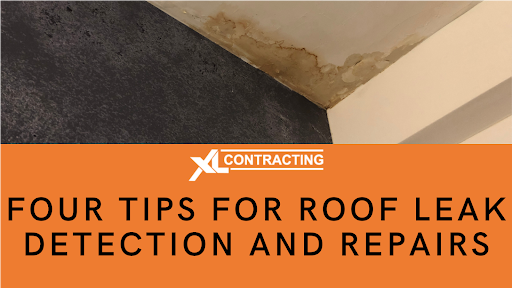
A roof leak can cause significant damage to your home. Not only is it a pain to deal with, but it can also cause structural problems and severe water damage.
According to the NRCA, nearly 70 percent of domestic roof installations consist of asphalt shingles due to their light weight, durability, and great price. Another benefit is that an asphalt shingle roof is probably the easiest type to repair. Curled shingles can be flattened and re-secured, and old shingles can simply be replaced.
If you suspect a roof leak, it is essential to detect and repair the problem as soon as possible. This post will discuss four tips for roof leak detection and repair to help you catch issues before they become major disasters.
Inspect your roof for damaged or missing shingles
One of your top priorities as a homeowner should be making sure that your roof is in excellent condition. This guarantees a home protected from the elements and keeps your family safe. Inspecting your roof regularly for curled, cracked, or missing shingles is a great way to stay on top of its condition.
Be sure to inspect your roof after severe storms. If you are not comfortable climbing on your roof because it’s unsafe, consider hiring a professional to inspect it for you. We offer free, no-obligation roof inspections.
Check for water stains on ceilings and walls
One of the telltale signs of a roof leak is water stains on your ceiling or walls. If you notice any water stains, it’s essential to have your roof inspected by a professional as soon as possible. If left unchecked, a leak could lead to much bigger problems, such as structural damage, mold, or even wood rot.
Water damage looks like a brown or yellow discoloration. There could also be peeling paint or buckling wallpaper.
- Inspect the flashing around the roof edges
Flashing is a material used in construction to prevent water leakage. It is typically placed around the roof's edges, where two planes meet. As time goes on, flashing can deteriorate and make it easier for a leak to occur. Check for cracks, rust, or gaps on the flashing. If you see any damage, it’s crucial to have a roofing contractor repair it as soon as possible to prevent further leaks. In some cases, you may be able to repair the damage yourself by resealing joints using a caulk gun filled with roofing cement. However, if the damage is extreme, it is best to contact a professional.
Check the soffits and fascia
The soffits and fascia are very important for your home’s structure. Soffit is the exposed siding underneath your roof’s overhang. Fascia is the area of siding directly above the soffit. It’s the exposed board you see on the front of your roof’s overhang. They protect your home from water damage but can become damaged or worn over time, allowing water to seep in. Signs of water damage can include warping, cracking, or peeling paint.
Don't wait to call your contractor if you notice any of these signs.
How We Can Help
In an industry where real expertise and genuine customer service can be hard to come by, XL Contracting stands out! We are experts in storm damage restoration and residential roofing. Call us for a FREE roof inspection today: (844) 507-6551.
Subscribe to XL Contracting's Blog









Comments